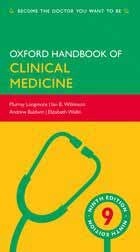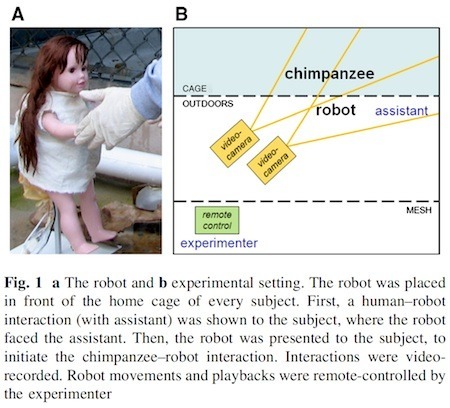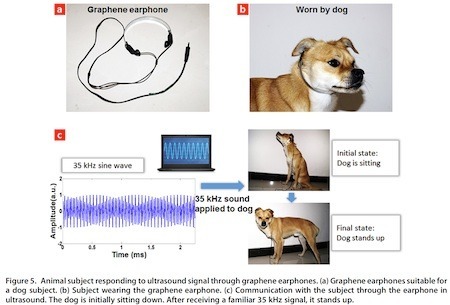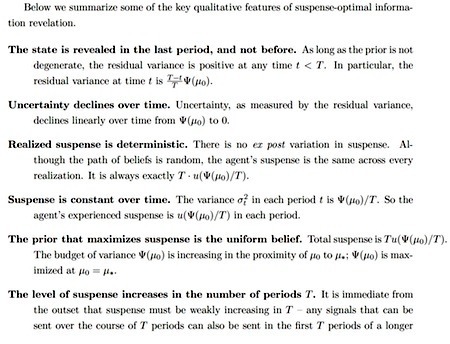Marc Abrahams's Blog, page 400
May 28, 2014
Cockney Rhyming Slang and Medical Terminology
 A refinement on a subset of UK medical slang [see my treatise on the general topic] is provided in a short communication by authors Anand N. Bosmia, Christoph J. Griessenauer, and R. Shane Tubbs for the International Journal of History and Philosophy of Medicine, Volumes 1-3: 2011-2013. See: Cockney Rhyming Slang and Medical Terminology.
A refinement on a subset of UK medical slang [see my treatise on the general topic] is provided in a short communication by authors Anand N. Bosmia, Christoph J. Griessenauer, and R. Shane Tubbs for the International Journal of History and Philosophy of Medicine, Volumes 1-3: 2011-2013. See: Cockney Rhyming Slang and Medical Terminology.
Examples :
Persian Rug – Drug
Wallace and Grommit – Vomit
George Michael – Menstrual cycle.
Elephant’s trunk – Drunk
“Pop culture has influenced the historical development of an informal medical jargon among speakers of Cockney rhyming slang. Cockney-speaking patients are more likely to discuss their health with physicians and other healthcare providers in less ambiguous terms, especially during medical emergencies. However, if slang is used to refer to conditions or behaviors that a patient does not discuss during the formal medical interview, or that a patient may wish to hide for fear of legal ramifications (e.g., drug abuse), healthcare providers would be at an advantage to know the equivalents of important medical terms in Cockney rhyming slang. Attention to such detail would contribute to the medical and social histories of the Cockney-speaking patient.”
BONUS: A hypothetical Cockney discussion; yours to translate using the handy ‘Slang to English’ facility at the online resource : Cockney Rhyming Slang.
Patient: “Doc, I’ve got a Michael Caine in me bacon and eggs, I’m right cream crackered, I reckon I got twist and shout!”
Doctor: “I don’t Adam and Eve it – you’re ‘aving a bubble bath? A bit less Harry Lime up the battle cruiser getting Brahms and Liszt you’d be Calvin Klein!”
Solution here •

How to Creep Out Chimpanzees with a Humanoid Robot Doll
Chimpanzees, in general, have less experience with creepy humanoid robot dolls than humans do. This study perhaps reflects that:
“Triggering social interactions: chimpanzees respond to imitation by a humanoid robot and request responses from it,” Marina Davila-Ross, Johanna Hutchinson, Jamie L. Russell, Jennifer Schaeffer, Aude Billard, William D. Hopkins, Kim A. Bard,” Animal Cognition, Volume 17, Issue 3, May 2014, pp 589-595. (Thanks to investigator Mark Relyea for bringing this to our attention.) The authors, at the University of Portsmouth,UK, Yerkes National Primate Research Center, Atlanta, GA, USA, the Neuroscience Institute and Language Research Center, Georgia State University, Atlanta, GA, USA, and Ecole Polytechnique Federale de Lausanne, Lausanne, Switzerland, report:
“The chimpanzees predominantly gazed at the robot throughout the experimental session, indicating high interest/ curiosity, and they also alternated gaze, perhaps to seek information from the assistant about this ambiguous agent.”
Here’s further detail from the study:

May 27, 2014
A Stand-up Effect on Dogs of Listening to Graphene Earphones
An innovative use of graphene, and of a dog:
“Graphene Earphones: An Entertainment for Both Humans and Animals,” He Tian , Cheng Li , Mohammad Ali Mohammad , Ya-Long Cui , Wen-Tian Mi , Yi Yang , Dan Xie , and Tian-Ling Ren, ACS Nano, epub April 26, 2014. (Thanks to investigator Wei Ting for bringing this to our attention.) The authors, at Tsinghua University, Beijing, China, report:
“Here, we show that graphene earphones, packaged into commercial earphone casings can play sounds ranging from 20 Hz to 1 MHz. By using a one-step laser scribing technology, wafer-scale flexible graphene earphones can be obtained in 25 minutes…. Our numerical calculations shows that the sound frequency emitted by graphene could reach up to 1 MHz. In addition, we have demonstrated that a dog wearing the graphene earphone could also be trained and controlled by 35 kHz sound waves. Our results show that graphene could be widely used to produce earphones for both humans and animals…. Communication with the subject through the earphone in ultrasound. The dog is initially sitting down. After receiving a familiar 35 kHz signal, it stands up. “
Here’s further detail from the study:

Self-inflicted: Squirrel Tissue Embedded with Birdshot in His Butt
Another apparent first in the history of medicine (brought to our attention by Sarah Wickline, writing in MedPage Today):
“Gunshot Wound Contamination with Squirrel Tissue: Wound Care Considerations,” Porter W. Maerz, Tricia B. Falgiani, and Robyn M. Hoelle [pictured here], Case Reports in Emergency Medicine, vol. 2014 (2014), Article ID 342914. The authors, at the University of Florida, report:
“While report of animal bites contaminating wounds is reported commonly, direct wound contamination with squirrel flesh has never been reported in the literature. The patient suffered an accidental self-inflicted gunshot wound that drove squirrel flesh and buck shot deep within his right buttock…. The patient was a teenage Caucasian male… According to the patient he was using the butt of his 12G shotgun to dislodge a dead squirrel from a branch over his head during a hunting trip and shot himself with a load of birdshot in the right buttock.”
BONUS (unrelated): “Avoiding Squirrels and Other Things Google’s Robot Car Can’t Do” [Wired]

Will Bennett joins Luxuriant Flowing Hair Club for Scientists (LFHCfS)
Will Bennett has joined the Luxuriant Flowing Hair Club for Scientists (LFHCfS). He says:
Since my first introduction to linguistics in 2003, in a course using Steve Pinker’s The Language Instinct as prescribed text, I have (despite occasional lapses) striven to reach Pinkerian standards of excellence both in linguistic research, and in exalting, cascading curls. My research interests are mostly on the sound-related side of the field: how phonetics, phonology and morphology (and sometimes syntax) interact. My work also focuses on under-represented/minority languages (particularly African languages).
Will Bennett, LFHCfS
Department of English Language and Linguistics
Rhodes University
Grahamstown, South Africa


Certain effects of molecularly heavy vs light bits of instant coffee…
Curious about what happens when you take instant coffee, separate it into components that have different molecular weights, and then stick those component separately into different test tubes that have rat spleen cells in them? If so, this is the study for you:
“Influence of molecular weight on in vitro immunostimulatory properties of instant coffee,” Cláudia P. Passos, Márcio R. Cepeda, Sónia S. Ferreira, Fernando M. Nunes, Dmitry V. Evtuguin, Pedro Madureira, Manuel Vilanova, and Manuel A. Coimbra, Food Chemistry, vol. 161, 2014, pp. 60-66. The authors report:
“Instant coffee was prepared and fractionated into higher (>100 kDa), medium (5–10, 10–30, 30–100 kDa) and lower (1–5,

May 26, 2014
Medical Slang in British Hospitals
Medical Slang in British Hospitals is given a detailed examination by Adam T. Fox, Michael Fertleman, Pauline Cahill and Roger D. Palmer in : Ethics & Behavior, Volume 13, Issue 2, 2003.
“The usage, derivation, and psychological, ethical, and legal aspects of slang terminology in medicine are discussed. The colloquial vocabulary is further described and a comprehensive glossary of common UK terms provided in the appendix.”
Some examples :
 Cheese & Onion* The Oxford Handbook of Clinical Medicine, because of its green and yellow cover. Also known as the “Bible”
Cheese & Onion* The Oxford Handbook of Clinical Medicine, because of its green and yellow cover. Also known as the “Bible”
Freud squad – Refers to psychiatrists.
GPO – Good for parts only.
N = 1 trial – Polite term for experimenting on a patient.
UBI – Unexplained beer injury, for all those hungover people on Sunday mornings with black eyes/swollen knees and no idea how they’d got them.
A full version of the paper may be found here.
BONUS: (related only via words) The Rutles perform ‘Cheese and Onion’
* Improbable author’s note to himself : errrr, shouldn’t that be cheese, onion and tomato?
Coming Soon : Are you having a bubble bath?

May 25, 2014
No need to wait for “Suspense and Surprise”
 If you have been waiting for “Suspense and Surprise”, your vigil is over. A PDF version of the paper is online. (Thanks to investigator Nathan Randall for bringing this to our attention.) The paper, of course, is the long-awaited (if you have been waiting long for it):
If you have been waiting for “Suspense and Surprise”, your vigil is over. A PDF version of the paper is online. (Thanks to investigator Nathan Randall for bringing this to our attention.) The paper, of course, is the long-awaited (if you have been waiting long for it):
“Suspense and Surprise,” Jeffrey Ely, Alexander Frankel, Emir Kamenica [pictured here], to be published in the Journal of Political Economy. The authors, at Northwestern University and the University of Chicago, explain:
“We model demand for non-instrumental information, drawing on the idea that people derive entertainment utility from suspense and surprise. A period has more suspense of the variance of the next period’s beliefs is greater. A period has more surprise if the current belief is further from the last period’s belief. Under these definitions, we analyze the optimal way to reveal information over time so as to maximize expected suspense or surprise experienced by a Bayesian audience. We apply our results to the design of mystery novels, political primaries, casinos, game shows, auctions, and sports.”
Here’s further detail:
And here are the key aspects of suspense and surprise, as presented in the paper:
BONUS: A video of Professor Ely demonstrating suspense and surprise in artfully pouring a latte:

May 24, 2014
Nauseated restaurant criticism
Restaurant reviews, some of them — especially the reviews written by non-professionals — have taken on new importance. They can be a means of identifying illnesses that otherwise go unreported to health officials. Mary McKenna (who is sometimes known professionally as “Scary Disease Girl”), writing on The Plate blog, explains:
Yelp Helps NYC Health Department Track Foodborne Illnesses
Today, in its weekly news bulletin, the Centers for Disease Control and Prevention reports on an innovative project that the New York City health department tried out for nine months in collaboration with Yelp. The team examined more than 294,000 reviews posted to the site between July 2012 and March 2013; found that 468 of them reported people getting sick after a meal; and discovered, within those 468, three foodborne illness outbreaks that authorities not known about. Only 3 percent of the illnesses listed on Yelp had ever been reported, by the sick people or their doctors, to the health department.
This is a big deal, several different ways. First, because this data—the reviews—are available for anyone to read, whereas foodborne illness information is notoriously difficult for public-health authorities to get hold of. (Think about it. The last time a presumably food-related illness took you down, did you call your doctor, or tough it out yourself?): The CDC itself acknowledges that its national figure of 48 million food-related illnesses each year is only an estimate, since as few as 2 percent of them get medical attention. And, second, because it offers a tiny step into a problem that public-health types are obsessed with: How to make practical use of the masses of data that swirls around us every day, and that we all contribute to, by texting, Tweeting, posting to blogs, updating Facebook, and so on.…
(The full cite for the New York City department ’ s paper is: Harrison C, Jorder M, Stern H et al. “ Using Online Reviews by Restaurant Patrons to Identify Unreported Cases of Foodborne Illness — New York City, 2012-2013. ” It is being published in the CDC ’ s Morbidity and Mortality Weekly Report.)
One must, of course, always be careful in interpreting data, especially to compensate for known types of error. Yelp, the data source used in this medical investigation is, like most sources of most data, not perfect.

Charismatic Krill?
Are krill charismatic, in human eyes? Should they be? What bodes this? Those questions are addressed in the study:
“Charismatic Krill? Size and Conservation in the Ocean,” Elizabeth Leane and Steve Nicol, Anthrozoos: A Multidisciplinary Journal of The Interactions of People & Animals, Volume 24, Number 2, June 2011 , pp. 135-146(12). The authors explain:
“Using Antarctic krill Euphausia superba as an example, we suggest that the perception amongst both scientists and the general public of krill’s small size, passivity, and lack of individuality has led to their being treated less like animals themselves than as background habitat for other animals. Because krill have such a central role in the Antarctic ecosystem and are the subject of a large fishery, these assumptions may have serious consequences for krill themselves and the conservation of the Antarctic region as a whole.”

Marc Abrahams's Blog
- Marc Abrahams's profile
- 14 followers







